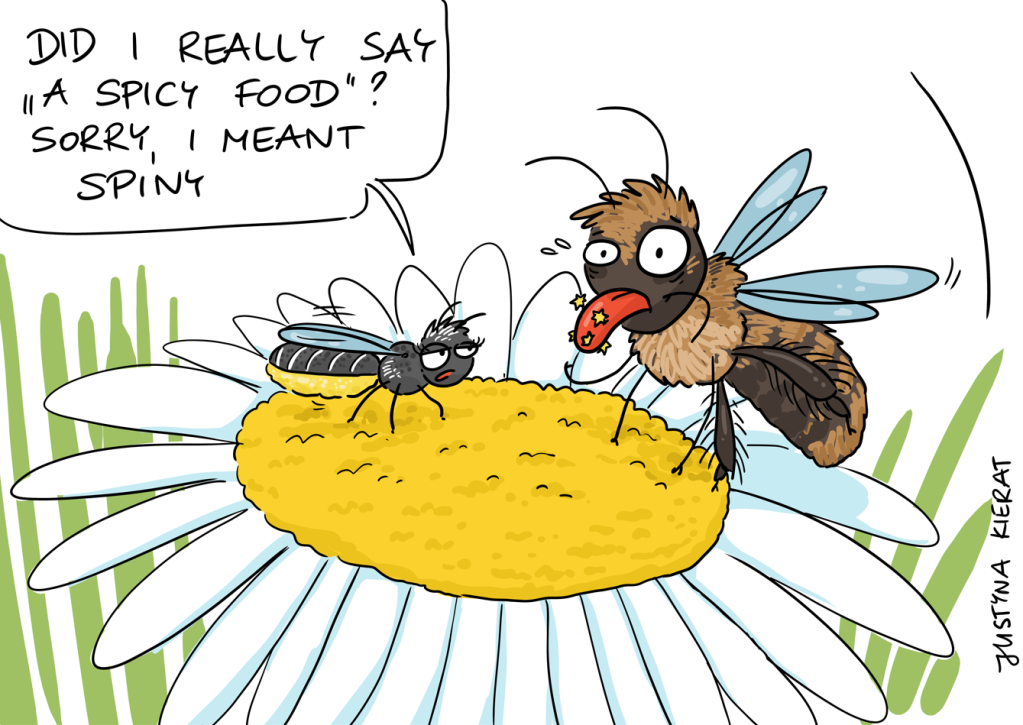Pollen is a main food of bee larvae. Adult females and most likely also males need it, too, although in smaller quantities. Not every pollen is the same – they differ in chemical composition, nutritional value, size and shape. It’s not an easy food – the nutritious contents are enclosed inside a hard-to-break cover, and sometimes additionally protected. Asteraceae pollen is an interesting example. It is easily accessible on the flowers but hard to digest by bees. There are some specialist species, feeding exclusively on Asteraceae pollen, but generalists, like bumblebees, don’t develop well on Asteraceae diet. You can find two explanations of this in the literature – one is a chemical defence, ie. some components which are tolerated by specialist bees but harmful to the majority of the others, and the other hypothesis points to the little spines on the surface of the pollen grains which do mechanical damage to bees. I find the idea that pollen pricks the bees eating it, particularly funny.
Here is a paper which was an inspiration to this cartoon: Rivest, S., Muralidhar, M., & Forrest, J. R. (2024). Pollen chemical and mechanical defences restrict host-plant use by bees. Proceedings of the Royal Society B, 291(2018), 20232298.

Leave a comment